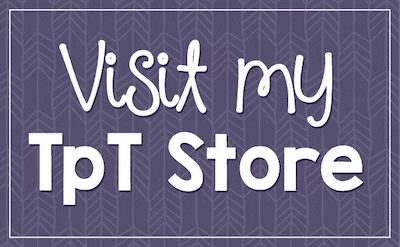
Teaching French verbs can be such a challenge, and that’s why I made these easy-to-use passé composé worksheets. I love teaching French grammar and verbs, but that doesn’t mean all students like French verb conjugation as much as I do! I wanted to find a way to make it accessible and fun for ALL students, especially those who don’t find past participle agreement particularly interesting.
I started out as an FSL teacher, so I originally made my passé composé worksheets with English explanations and directions. That worked great, but I found that I sometimes needed to review with upper levels, so eventually, I made a second version in full-French. In the end, it all worked out perfectly, because French immersion teachers love using my full-French passé composé worksheets!
I now include both together in one resource, so if you teach core and immersion, move back and forth between grade levels, or just want to differentiate for the needs of students in the same class, it’s so easy!

To start, it’s important to provide the basics before jumping into a long list of verbs, irregular past participles, and être verbs! Students often have very little understanding of conjugation and tenses in their first language, so learning it in a second one can be confusing at first. Start them off with the most basic verbs: regular ER verbs. You can then move to IR and RE verbs and finally some irregulars.
Want to talk about past participles? Make sure they know what you mean! You can give them examples in English and have them create a list with a partner. They may even notice that some are irregular, making it easier when you get to those down the road.

Next, I give them more structured practice for regular ER, IR, and RE verbs and show them how to use negation with the passé composé.
I love using individual whiteboards to assess students formatively all at once. After you’ve done a few practice conjugations on the board for them, have them answer on their whiteboards and hold them up so you can see at a quick glance how well they are understanding. Take a few minutes to check for understanding before assigning independent work. It’s much better to take an extra five or ten minutes together in class than sending them home with a passé composé worksheet that comes back all wrong!

Once students are understanding the rules of regular French verbs in the passé composé, we practice with irregular past participles. Most of these are verbs my students know the meaning of already, but I do go through the list and make sure they are all familiar with the words. What is the point of knowing a past participle when you don’t know what it means?

Next, I teach the verb aller in the passé composé. I have found that it is so much easier to start with just one verb when introducing être as an auxiliary verb along with past participle agreement. It’s less overwhelming for them, and students might not have seen a few être verbs yet (mourir, naître) so we have to teach new vocabulary along with it!
I like to take small steps through this whole process to make sure students really understand, because if they don’t get this, it only makes future topics more difficult (like the imparfait and passé composé together or the plus-que-parfait).

For teaching the passé composé with être, it’s so important to have notes that students can understand! If my students are up for the challenge, I use this full-French version, but the English version makes it really easy to provide more support when needed.
Some students like the maison d’être page to help them visualize the words while other students prefer to memorize Dr. & Mrs. Vandertamp. I include both when I print their passé composé worksheets so they can choose the page that is the most helpful to them.

All along the way, we are not just doing passé composé worksheets, because not only is that not fun for a lot of kids, but it’s not helping students who have different learning styles.
In order to help the kids really retain the information they are practicing on their sheets, I mix in French speaking activities and verb conjugation games that really get them engaged. It’s a nice break from a paper-pencil task, benefits different learning styles, and gives you a break! Plus, any way you can get students speaking is also SO important!

Finally, it’s time to put it all together! There is a lot for students to get in this unit:
- regular French ER, IR, and RE verbs
- negative sentences
- irregular past participles
- choosing the correct auxiliary verb
- past participle agreement

This can be such a challenging and boring topic for students. The prep for a unit like this can take hours and hours, and there is only so much time in the day, right? Teachers love to save time planning with my passé composé worksheets, because the hard work is done for them! They can just download and print the pages they need and make a handy packet for their students.
With the included French speaking activities, games, and exit tickets, there is so much to choose from, so differentiating is that much easier!



Leave a Reply